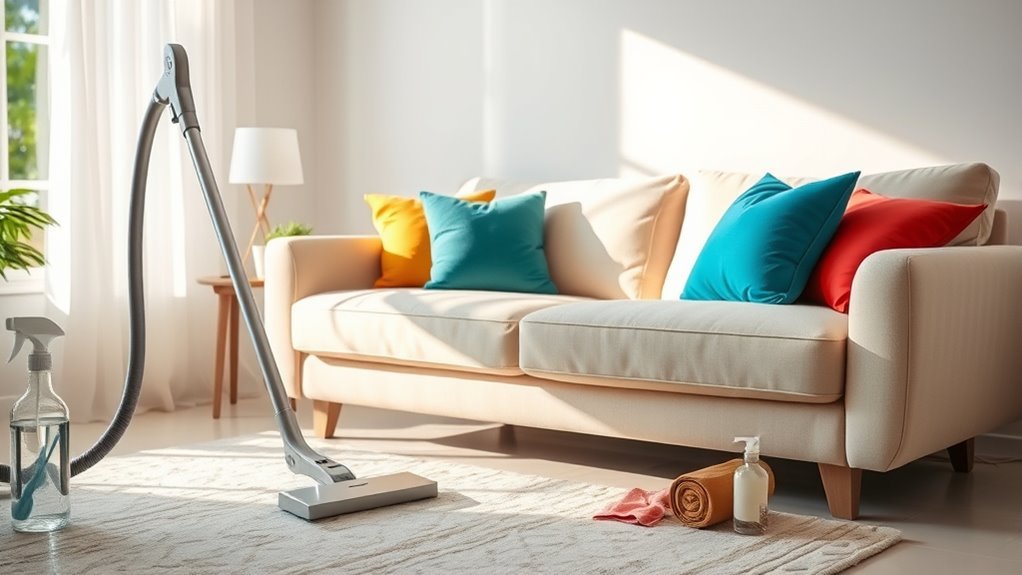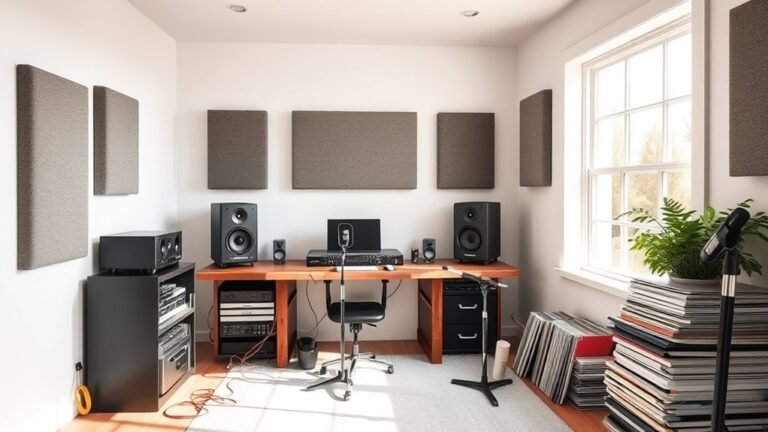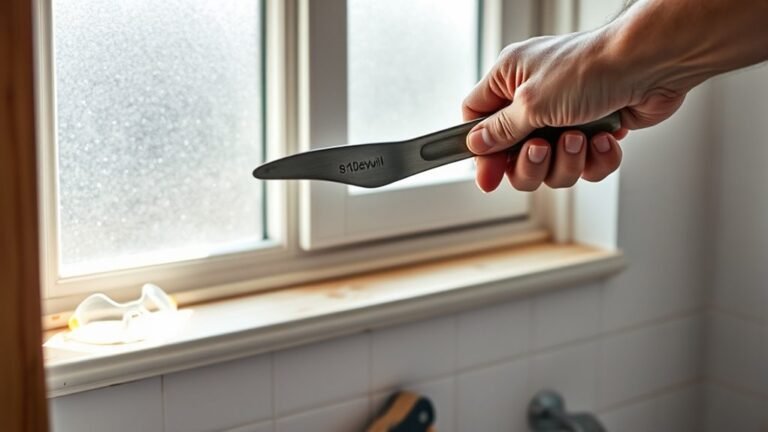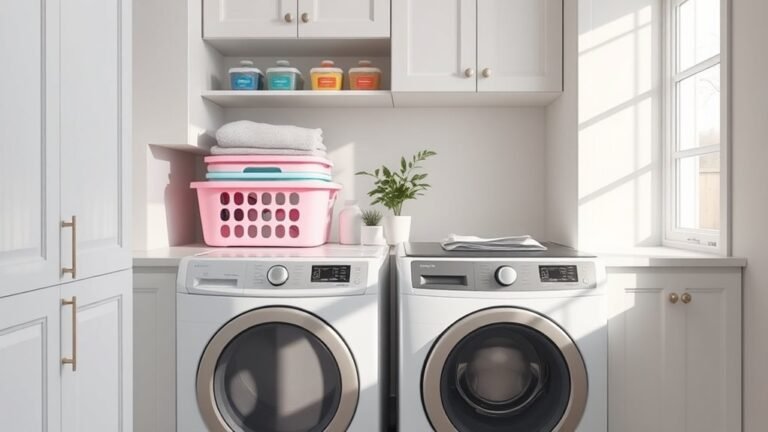Cleaning With Sofa: What Works and What Doesn’T
When cleaning your sofa, first identify its fabric to choose the right method—natural fibers need gentler care, synthetics can handle more. Blot stains quickly with mild detergent; avoid harsh chemicals like bleach or ammonia that harm fabric. DIY solutions like vinegar-water sprays and baking soda work well but always test on hidden spots. Regular vacuuming keeps debris away, preserving fabric and color. Keep these basics in mind, and you’ll uncover more ways to maintain your sofa’s look and freshness.
Understanding Different Sofa Materials and Their Cleaning Needs

Although sofas come in various materials, each demands specific cleaning methods to maintain their appearance and longevity. You’ll find fabric types ranging from natural fibers like cotton and linen to synthetics such as polyester and microfiber. Each fabric type has a recommended cleaning frequency; natural fibers often require gentler, less frequent cleanings to prevent damage, while synthetic fabrics can handle more regular maintenance. Knowing your sofa’s fabric type helps you choose the right cleaning approach, ensuring you avoid harsh chemicals that might degrade the material. By adjusting cleaning frequency to the fabric’s needs, you preserve both comfort and style effortlessly. Understanding these basics gives you the freedom to keep your sofa looking fresh without overdoing it or risking harm.
Effective Cleaning Techniques for Common Sofa Stains
When you deal with common sofa stains, acting quickly and using the right technique can make all the difference. Regular cleaning frequency helps maintain your sofa’s appearance, but knowing how to tackle specific stains boosts your stain prevention efforts. Here’s a quick guide to common stains and how to handle them:
| Stain Type | Effective Cleaning Technique |
|---|---|
| Food/Beverage | Blot with a damp cloth, mild detergent |
| Ink | Dab with rubbing alcohol, avoid rubbing |
| Oil/Grease | Sprinkle baking soda, then vacuum after 15 min |
Safe and Recommended Cleaning Products for Sofas

Choosing the right cleaning products is essential to keep your sofa looking fresh without causing damage. You want solutions that protect fabric integrity while effectively removing dirt and stains. Opt for products designed specifically for upholstery and prioritize eco friendly options to reduce harsh chemical exposure.
Consider these safe and recommended cleaning aids:
- Plant-based upholstery sprays that refresh and deodorize without toxins
- Mild detergent blends formulated for delicate fabrics
- Enzyme cleaners that break down organic stains naturally
- Microfiber-safe vacuum attachments to loosen debris before applying liquids
Avoid bleach, ammonia, or abrasive cleaners, which can ruin fibers and colors. By selecting gentle, purpose-made products, you’ll maintain your sofa’s appearance and enjoy a healthier home environment.
DIY Sofa Cleaning Solutions That Actually Work
You can tackle sofa stains effectively with simple homemade cleaners made from ingredients like vinegar, baking soda, and mild soap. Knowing the right stain removal techniques helps you avoid damage while restoring your sofa’s look. Always test your cleaner on a hidden spot to guarantee it’s safe for your fabric type.
Effective Homemade Cleaners
Anyone looking to refresh their sofa without harsh chemicals will find effective homemade cleaners surprisingly easy to make. Using natural ingredients not only protects your fabric but also supports a healthier living space. You’ll appreciate how adjusting cleaning frequency keeps your sofa looking fresh longer without overdoing it. Here are some reliable DIY options:
- Mix equal parts white vinegar and water for a gentle all-purpose spray.
- Use baking soda sprinkled on the fabric to absorb odors; vacuum after 20 minutes.
- Combine mild dish soap with warm water for spot cleaning tough grime.
- Create a hydrogen peroxide solution (3%) for light-colored sofas to brighten stains.
These solutions are safe, affordable, and empower you to maintain your sofa’s beauty on your terms.
Stain Removal Techniques
Three simple DIY stain removal techniques can make a big difference in keeping your sofa spotless. Knowing stain types and adjusting cleaning frequency helps you tackle spots effectively. Act quickly on spills, using gentle blotting rather than rubbing to avoid fabric damage.
| Stain Type | Recommended Solution | Cleaning Frequency |
|---|---|---|
| Food & Drink | Mild dish soap + warm water | Immediate, then weekly |
| Oil & Grease | Baking soda + vinegar paste | Immediate, spot clean |
| Ink & Dye | Rubbing alcohol + cloth | Immediate, careful touch |
Safe Fabric Cleaning
Although professional cleaning products are available, many effective DIY sofa cleaning solutions use common household ingredients to safely refresh your fabric. Prioritizing fabric safety means selecting gentle methods that won’t damage fibers or colors. You should also consider cleaning frequency—regular upkeep prevents buildup and extends your sofa’s life.
Try these simple, safe techniques:
- Vacuum regularly to remove dust and debris without harsh chemicals.
- Use a mild soap solution for spot cleaning, testing first on a hidden area.
- Apply a mixture of white vinegar and water to neutralize odors and brighten fabric.
- Blot spills immediately with a clean cloth to avoid staining.
With these tips, you maintain fabric safety while enjoying a fresh, inviting sofa without relying on costly or abrasive products.
Common Mistakes to Avoid When Cleaning Your Sofa
When cleaning your sofa, you shouldn’t use harsh chemicals that can damage the fabric or cause discoloration. Always check and follow the fabric care labels to avoid ruining your upholstery. Ignoring these simple steps can lead to costly mistakes and reduce your sofa’s lifespan.
Using Harsh Chemicals
Since your sofa is a delicate piece of furniture, using harsh chemicals can quickly damage its fabric or finish. You want to avoid stripping color, weakening fibers, or leaving harmful residues. Instead, consider safer options that preserve your sofa’s integrity and your freedom from harsh toxins.
Here’s what to keep in mind:
- Skip bleach, ammonia, and strong solvents.
- Test any cleaner on a hidden spot first.
- Opt for chemical alternatives like mild dish soap or upholstery cleaners.
- Explore natural solutions such as vinegar, baking soda, or essential oils.
Ignoring Fabric Care Labels
Even if you’re keen to clean your sofa quickly, ignoring its fabric care labels can lead to costly mistakes. These labels are there to guide you on the safest cleaning methods, preventing fabric damage that could otherwise ruin your sofa. Label ignorance might seem like a shortcut, but it often results in staining, shrinking, or weakening of the fabric fibers. Instead of experimenting blindly, take a moment to check the label’s cleaning codes—whether it allows water-based cleaners, solvents, or requires professional cleaning. Following these instructions gives you the freedom to clean effectively without risking your sofa’s integrity. Don’t let fabric damage from careless cleaning trap you; respect the care labels, and your sofa will stay fresh and durable longer.
Maintaining Your Sofa’s Freshness Between Deep Cleans

Although deep cleaning your sofa is essential, maintaining its freshness between sessions requires simple, consistent habits. By adopting effective freshness strategies, you can extend the life of your sofa and keep odors at bay. Focus on odor prevention to avoid buildup that needs harsh cleaning later. Here are four key freshness strategies:
- Vacuum regularly to remove dust and debris.
- Use fabric-safe sprays designed to neutralize odors.
- Rotate and fluff cushions to prevent uneven wear.
- Place baking soda on the fabric, let sit for 15 minutes, then vacuum to absorb smells.
These small steps keep your sofa inviting and fresh without sacrificing your time or freedom. Incorporate these habits into your routine, and you’ll enjoy a clean, fresh sofa between deep cleans effortlessly.
Frequently Asked Questions
How Often Should Professional Sofa Cleaning Be Scheduled?
Imagine Sarah, who schedules professional sofa cleaning every six months, balancing cleanliness with convenience. You should consider your lifestyle when deciding scheduling frequency; if you have pets or kids, shorter cleaning intervals—around every three to four months—work better. Otherwise, twice a year usually suffices to maintain fabric health and appearance without hassle. Adjust cleaning intervals based on use and exposure, ensuring your sofa stays fresh without restricting your freedom.
Can Pets Cause Permanent Damage to Sofa Fabrics?
Yes, pets can cause permanent damage to sofa fabrics if pet stains aren’t treated quickly. Urine and other fluids can discolor and weaken fibers over time. To protect your sofa, you should use fabric protection sprays designed to repel stains and odors. Regularly cleaning pet stains and using washable covers can also help maintain your sofa’s condition, letting you enjoy freedom from worry about long-term damage.
Are Steam Cleaners Safe for All Sofa Types?
Imagine your sofa like a delicate garden—each fabric type a unique flower needing specific care. Steam cleaning can refresh many sofas, but it’s not safe for all; leather or silk may wilt under intense heat and moisture. You should always check fabric compatibility before using steam cleaning to avoid damage. When done right, steam cleaning frees your sofa from grime while preserving its beauty, letting you enjoy a fresh, vibrant living space.
How Do Humidity and Climate Affect Sofa Cleanliness?
Humidity effects can make your sofa more prone to mold, mildew, and odors, especially in damp climates. High moisture levels encourage bacteria growth, so you’ll want to keep your space well-ventilated. Climate considerations matter; dry areas may cause fabric to become brittle, while humid regions require more frequent cleaning. Understanding these factors helps you maintain your sofa’s freshness and durability, giving you the freedom to enjoy a clean, comfortable living space.
What Are the Best Ways to Deodorize a Sofa?
To deodorize your sofa effectively, sprinkle baking soda generously over the fabric and let it sit for at least 15 minutes—longer if you can. This absorbs odors naturally. For a revitalizing twist, mix a few drops of your favorite essential oils, like lavender or eucalyptus, into the baking soda before applying. Afterward, vacuum thoroughly to remove residue and enjoy a fresh, inviting scent without harsh chemicals or restrictions.






